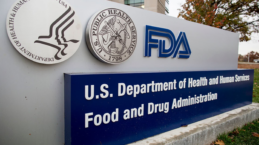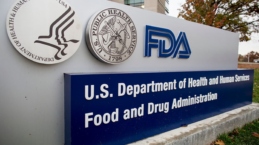

insights
One of These Things is Not Like the Other: FDA Draft Guidance on Sameness for Gene Therapy
The U.S. Food and Drug Administration (FDA) recently finalized several guidance documents for the industry on gene therapy, including broad manufacturing and development guidance along with condition-specific development directions for hemophilia and retinal disorders. These documents were previously in draft form and the final versions are in-line with their predecessors, so those of us who have worked on manufacturing and/or development aspects of gene therapy programs have been aware of the Agency’s stance on these topics for a while. As with all FDA guidance, the documents are summaries of the Agency’s current thinking and are not summaries of legally binding requirements. In general, if a company does not deviate much from the approved guidance during the development phases, the Agency will likely find the prospective licensing application fit for submission (pending review of the data, of course).
However, there was one twist added to the publication of the final documents: new draft guidance on the Agency’s initial thoughts for defining the interpretation of sameness for gene therapies within the context of orphan-drug designation. In this case, sameness pertains to the principal molecular structural features of the gene therapy products. According to the documents, “FDA generally intends to consider
certain key features such as transgenes and vectors used in gene therapy products to be “principal
molecular structural features” under this regulation.” Of all the guidance documents on gene therapy, the draft stance on sameness is the leanest in terms of content. In contrast, the Agency’s determination of sameness for gene therapy products targeting orphan-drug designation, and specifically orphan-drug exclusivity, could be the greatest in terms of impact. If a newly approved gene therapy is granted orphan-drug exclusivity, the Orphan Drug Act prevents the Agency from approving any other licensing application for the same gene therapy product for seven years, assuming the application is for the equivalent indication. Thus, it is not surprising that the issuance of this draft guidance was the most newsworthy of the recent publications.
Though the sameness guidance is still just a draft, much of this current thinking will likely be retained in the final approved version. It is important to note that in the guidance, sameness at a molecular level for gene therapies (and all orphan-designated drugs) does not matter if there is a differentiation in therapeutic effect demonstrated in clinical trials. Sameness must be assessed on both molecular and clinical efficacy grounds; the sameness determination cannot be fully adjudicated until the completion of pivotal Phase 3 trials in the intended indication. The guidance does provide some key and interesting thoughts from the Agency regarding how molecular sameness will be assessed, and these thoughts are immediately applicable, regardless of the stage of development.
First, and most obvious, is that the transgene which encodes the genetic information to induce enzyme expression will be a differentiating factor in the sameness assessment. A good example of this is in the development of gene therapy for hemophilia, where the disease is caused by the lack of synthesis of coagulation Factor VIII (FVIII, hemophilia A) or Factor IX (FIX, hemophilia B), leading to coagulation deficiency. There are many companies pursuing gene therapies for these indications, so it is difficult to see how they will all avoid sameness in the transgene.
For hemophilia B, the leading programs feature a FIX variant transgene called Padua FIX, which is a more active form than the normal FIX (i.e., “wild-type”). Will the Agency consider the Padua variants used by these products to meet the sameness criteria? Possibly, so it is imperative for each company to finish first to market and achieve orphan-drug exclusivity, placing the burden on its competition to convince the Agency that their FIX gene therapy is not the same and should be approved for marketing. Conversely, this could also mean that a lagging competitor using a wild-type FIX transgene is not subject to sameness, as the transgene has principle molecular dissimilarities from Padua FIX, even though it is encoding the same protein.
For hemophilia and other diseases of monogenic pathology, it will be fascinating to see how the Agency imparts an evaluation of sameness of transgenes when molecular differentiation could be argued based on a single nucleic acid difference, if therapeutically relevant.
The next sameness component for evaluation is the vector. The Agency is clear in its language that the use of a separate class of viruses (e.g., lentivirus vs. adenovirus) will be differentiating, even if a company uses the same transgene. Using the hemophilia example again, this means that two separate programs could seek approval using the wild-type form of FIX for hemophilia B, gain orphan-drug designation and exclusivity if those wild-type transgenes were packaged in different viruses. This potentially opens the door for exploration of additional viral classes to establish platforms for next-generation therapies that may have therapeutic benefits (e.g., enhanced transduction, expression durability).
However, the Agency surprisingly draws the line at within-class viral differentiation, such as the cited example of adeno-associated virus (AAV) serotypes AAV-2 vs. AAV-5. The guidance states that the Agency will make the sameness determination on a “case-by-case basis,” which is potentially problematic for the AAV gene therapy programs in development. For example, a large portion of non-clinical AAV research and development efforts is focused on developing different AAV serotypes to provide a level of product differentiation, evade pre-existing neutralizing antibodies or enhance tropism for a cell type. If the Agency establishes precedence that separate AAV serotypes alone are not enough to avoid a sameness conclusion, much of the AAV gene therapy pipeline in the industry will be at some sameness risk unless there are alternative differentiating molecular features (or there are better clinical efficacy results). Gene therapy companies may see increased concerns from investors given the risk of market exclusion for sameness of vectors with different serotypes, as there are large non-clinical, clinical and commercial supply costs (likely hundreds of millions of US $) required to support full development for these products.
The Agency expands on the sameness risk with additional language regarding principal molecular features for the assessment, stating that: “FDA does not intend to consider two gene therapy products to be different drugs based solely on minor differences between their transgenes and/or vectors.” What constitutes a “minor difference” in the Agency’s view is subjective enough to make many companies that are not ahead in development within a given indication very uncomfortable. Does this mean that two transgenes, which have nucleic acid variations or deletions that are posited to be therapeutically relevant, are the same until proven otherwise by pivotal clinical data? A literal interpretation of the guidance suggests this is possible, but any gene therapy development program will be reviewed on the merits of its non-clinical and clinical data and the Agency reserves the right to determine sameness based on these data. For a final point of clarification (or, depending on one’s view, a lack thereof), the Agency adds that: “If two gene therapy products express the same transgene and have or use the same vector, determining whether the gene therapy products are the same drug…may also depend on additional features of the final product that can contribute to the therapeutic effect. These additional features may include regulatory elements…” In this statement, the Agency indicates that principal molecular features such as the promoter or codon optimization may be a point of differentiation for products with the same transgene and/or the same vector, with the important caveat that these features contribute to a therapeutic benefit, dovetailing nicely into the overarching point that the sameness assessment may ultimately depend on the totality of clinical data produced from late-stage efficacy trials.
In defense of the Agency, they are applying the rules of the Orphan Drug Act to a much more complicated biotechnological modality as compared to small molecules or monoclonal antibodies, where sameness risk has a lower price to pay. So how does a sponsor take on the calculated risk of advancing an expensive manufacturing and development program for gene therapy, knowing that the Agency (given this new guidance) may decline approval due to molecular sameness if there is no clinical differentiation? An initial step is reading, interpreting and following the FDA guidance as stated, then following-up with the Agency in a meeting format to gain more insight. There are multiple pathways to engage the Agency in early development, including INTERACT, Type B and Type C meetings. Given that the Type C meeting is post-IND (i.e., following the completion of pivotal nonclinical toxicology studies and the initiation of a first-in-human trial), it may seem like the least valuable time for this discussion.
However, a sponsor can have multiple Type C meetings to address the broad array of challenges that arise during development, and the application of orphan-drug regulations to a sponsor’s development program is a very relevant topic for a Type C meeting. An entire Type C meeting can be dedicated to the orphan-drug designation and exclusivity questions, including molecular sameness and the level of clinical superiority required to negate it. Concurrently, data from a Phase 1 study can assess the likelihood that a given gene therapy product, which may be infringing on molecular sameness, can be reasonably expected to achieve clinical superiority in later-stage development. In this situation, it is critically important to have an in-depth understanding of disease pathophysiology, prior clinical study outcomes (and applicable regulatory precedence), along with robust pharmacological modeling and statistical simulation capabilities. Results from these analyses, shared with the Agency during early-phase discussions such as a Type C meeting, may help clarify considerations for sameness of a gene therapy produce and enhance portfolio prioritization decisions for sponsors.
When the biotechnology industry pushes further into uncharted territories, the industry also pushes the Agency along with it. The new draft guidance on sameness for gene therapies for orphan-drug designation and exclusivity, while similar to other guidance in many ways, is unlike any the Agency as had to issue before. Sponsors and gene therapy researchers need to take this communication seriously, interpret where, when and how it may impact their pipeline, and reach out to the Agency for assistance as early and as often as possible. It is essential for drug developers and regulators to work together in this regard, as there are many rare diseases of monogenic causality that are in need of an effective treatment and gene therapies provide a platform to potentially modify – if not permanently transform – the lives for patients living with these conditions. It is our responsibility as a drug development community, agency and industry combined, to advance these potential therapeutic solutions and turn them into realities.




